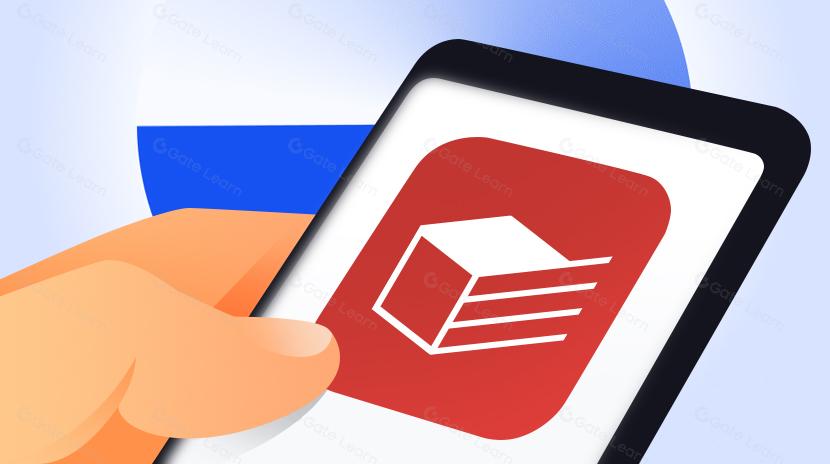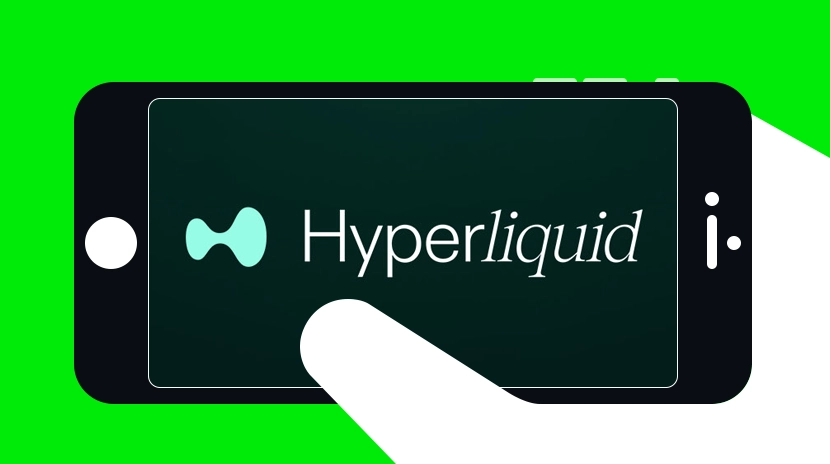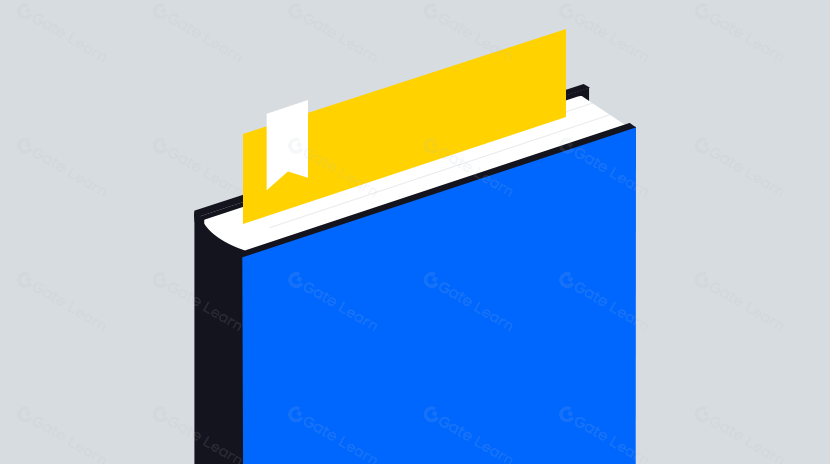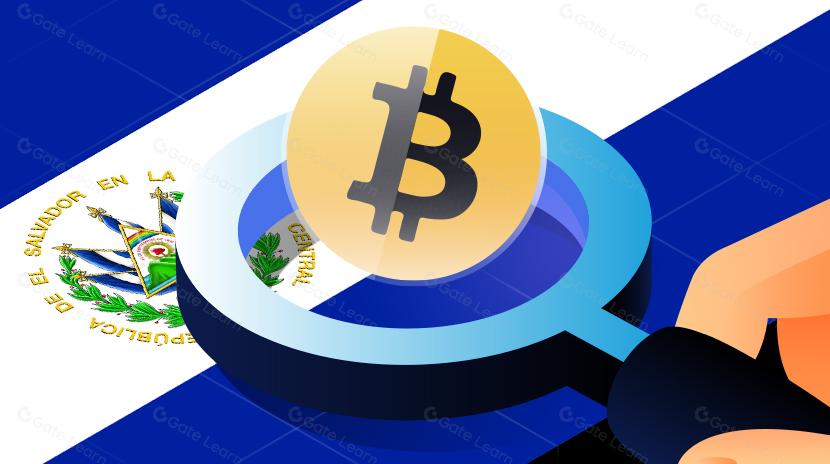UMA TIDAK Cukup untuk Sengketa IP
Poin Penting
- Saat ini, Cerita mengandalkan Oracle Optimistis UMA untuk menyelesaikan sengketa IP. UMA adalah model berdasarkan pemungutan suara berbobot token, di mana pemegang $UMA memberikan suara tentang "kebenaran" klaim.
- Struktur ini menimbulkan risiko serius: pemungutan suara berbasis modal menguntungkan paus, insentif pemegang token mungkin menyimpang dari keadilan, dan kapitalisasi pasar UMA yang rendah menghadapkannya pada manipulasi dan jumlah pemilih yang rendah.
- UMA telah menghasilkan putusan yang kontroversial dalam pasar prediksi berisiko tinggi (misalnya, pemilihan Venezuela, token $DJT, konflik Israel-Suriah), menimbulkan pertanyaan tentang kesesuaiannya untuk arbitrase IP yang halus dan sensitif secara sosial.
- Cerita memerlukan sistem perselisihan yang dioptimalkan untuk netralitas, ketahanan, dan legitimasi; yang mendapatkan kepercayaan bukan hanya di rantai, tetapi juga secara sosial. Itu berarti meminimalkan plutokrasi dan memaksimalkan interpretabilitas, terutama bagi para pencipta.
- Alternatif yang layak meliputi model multi-orakel, panel ahli, banding yang diabadikan, dan juri berbasis reputasi. Pendekatan bertingkat (cepat ketika bisa, tangguh ketika harus) akan lebih baik melayani misi jangka panjang Story.
Story sedang membangun infrastruktur untuk bagaimana IP bekerja on-chain - sebuah misi besar dan ambisius yang meliputi konten kreatif, karya yang dihasilkan oleh AI, dan lisensi yang dapat diprogram. Taruhannya sangat besar.
Namun ada titik buta yang terkubur dalam arsitektur saat ini: penyelesaian sengketa. Saat ini, Story mengandalkan Optimistic Oracle Protokol UMA untuk menentukan hasil dari sengketa IP on-chain.
Ini bukan kritik terhadap UMA dalam defi. Ini adalah peringatan bahwa menggunakan pemungutan suara pemegang token untuk memutuskan siapa pemilik IP adalah risiko struktural. Artikel ini menjelaskan mengapa UMA tidak cocok untuk Story, dan mengusulkan alternatif yang lebih baik dan lebih kokoh yang sejalan dengan tujuan jangka panjang Story.
1. Bagaimana UMA Bekerja (dan Mengapa Cerita Menggunakannya)
Modul perselisihan Story saat ini menggunakan UMA Optimistic Oracle V3 sebagai backend arbitrasinya. Pada tingkat tinggi, UMA memungkinkan resolusi perselisihan terdesentralisasi melalui mekanisme pemungutan suara token yang mendorong modal. Berikut cara kerja alur dalam Story:

Sumber: Yayasan Cerita
- Sengketa diajukan: Siapa pun dapat menantang suatu IP dengan memilih tag (misalnya PENDAFTARAN_TIDAK_SESUAI), mengunggah bukti ke IPFS, dan memposting obligasi.
- Jendela kehidupan: Ada periode (dibagi menjadi jendela hanya pemilik dan jendela tantangan publik) untuk klaim dapat disangsikan kembali.
- Penyelesaian Asumsi: Jika tidak ada yang melawan, IP tersebut akan ditandai. IP tersebut tidak lagi dapat mencetak lisensi, klaim royalti, atau berkembang dalam derivatif.
- Jika terdapat perselisihan: Kasus tersebut akan naik ke DVM (Mekanisme Verifikasi Data) UMA, di mana pemegang token UMA memberikan suara mengenai hasilnya.
- Mekanisme pemungutan suara: Setiap token $UMA = 1 suara. Para pemilih akan mendapatkan imbalan jika mereka memilih dengan mayoritas.
- Beban bukti: Ada pada pihak yang berselisih, yang harus membuktikan kasus di luar keraguan yang wajar.
- Persyaratan bukti: Harus dapat dicerna (dalam waktu kurang dari ~1 jam) dan disesuaikan berdasarkan jenis tag.
Jika para pemilih setuju dengan penggugat, IP secara resmi ditandai dan dikenai hukuman. Jika tidak, obligasi tersebut disita dan aset tersebut dibersihkan.
Ini adalah sistem yang rapi dalam teori: pemegang token yang mendapat insentif ekonomi bertindak sebagai hakim terdesentralisasi, dan sebagian besar perselisihan diselesaikan secara optimis. Tetapi model ini mulai hancur ketika diterapkan pada konflik subjektif, bernilai tinggi, sosial sensitif seperti IP.
Hal ini karena berbeda dengan umpan harga atau hasil pasar, perselisihan IP seringkali memerlukan interpretasi. Apakah suatu karya diplagiat atau "terinspirasi"? Apakah sebuah turunan bersifat transformatif atau melanggar hak cipta? Apakah seseorang melanggar persyaratan lisensi seperti atribusi atau penggunaan komersial? Ini bukan fakta biner; mereka tergantung pada konteks, penilaian, dan seringkali, pemahaman manusia. Memutuskan kasus-kasus ini melalui pemungutan suara token berisiko mengubah konflik kreatif kompleks menjadi kontes lemparan koin.
2. Cacat Struktural dalam Model UMA
2.1 Voting Berbasis Modal = Plutokrasi, Bukan Keadilan
Oracle UMA bergantung pada pemungutan suara berbobot token: semakin banyak $UMA yang Anda miliki, semakin besar pengaruh yang Anda miliki. Pada praktiknya, ini memberikan kekuatan berlebih kepada para "whales", menciptakan sistem plutokratis di mana kebenaran ditentukan oleh stake, bukan keahlian. Hanya sebagian kecil dari pasokan UMA yang biasanya memberikan suara.sekitar 15 juta token, artinya beberapa pemegang besar dapat dengan mudah mengubah hasil.
Lebih buruk lagi, pemilih ini biasanya tidak terkait dengan protokol yang terkena dampak. Misalnya, pengguna Polymarket atau pembuat Cerita tidak memiliki masukan langsung; keputusan ada pada pemegang token UMA yang insentifnya mungkin tidak selaras dengan keadilan. Sementara salah satu pendiri UMA Hart Lambur berpendapat bahwa pemilih selaras jangka panjang, insentif jangka pendek, apatis, atau bahkan konflik kepentingan (misalnya, paus memegang taruhan) dapat mendistorsi hasil atau setidaknya persepsi keadilan. Persepsi itu saja sudah cukup untuk merusak kepercayaan.
2.2 Kap Pasar Rendah UMA = Risiko Tinggi
Market cap UMA yang rendah, hanya sekitar $100~$200 juta, membuatnya rentan terhadap manipulasi. Secara teoritis, seorang aktor yang didanai dengan baik bisa mengakuisisi sebagian besar token, memperselisihkan pasar, dan memberikan suara untuk mendapatkan keuntungan, mengorbankan nilai token untuk keuntungan yang lebih besar di tempat lain. Bahkan tanpa serangan 51% penuh, partisipasi rendah berarti sekelompok pemilih dapat mendominasi.seperti yang terlihat dalam sengketa masa lalu di mana hampir semua suara berasal dari kelompok kecil.
Hal ini menimbulkan kekhawatiran inti: keamanan ekonomi UMA mungkin tidak mencukupi untuk melindungi nilai keuangan dan reputasi yang berkembang yang melewati sistem ini, mulai dari pasar prediksi hingga arbitrase IP. Sebuah sistem yang krusial seperti ini seharusnya tidak bergantung pada token yang rapuh dan basis pemilih yang kecil.
2.3 Hasil Kontroversial yang Merusak Kredibilitas
UMA telah menghadapi perselisihan yang ramai diperbincangkan yang meragukan kemampuannya untuk menangani kasus-kasus subjektif. Beberapa sorotan:
- Barron Trump & $DJT (2024): UMA memutuskan bahwa Barron Trump tidak terlibat dalam peluncuran memecoin $DJT, mengandalkan bukti publik yang terbatas dan tidak meyakinkan. Pasar memiliki hampir $2 juta minat terbuka.Polymarket akhirnya mengesampingkan keputusan UMA dan mengembalikan dana pengguna untuk menjaga integritas platform.
- Aksi Militer Israel-Suriah (2024): UMA menolak untuk menyelesaikan “Ya” pada pasar senilai $10 juta meskipun beberapa laporan yang mengkonfirmasi serangan Israel di wilayah Suriah selama periode yang ditentukan. Dataran Tinggi Golan dikecualikan dari kriteria, tetapi Israel dilaporkan maju melewati zona-zona buffer ke desa-desa Suriah yang diakui. Dua usulan resolusi ditolak, dengan 97,3% suara menentang.
- Pemilihan Venezuela (2024): Resolusi yang didukung oleh UMA menamai kandidat oposisi Edmundo Gonzalez sebagai pemenang, berdasarkan tuduhan kecurangan dan laporan pihak ketiga. Hal ini bertentangan dengan hasil resmi dari CNE Venezuela, yang menyatakan Maduro sebagai pemenang dengan lebih dari 5 juta suara. Pasar senilai $6,1 juta menimbulkan reaksi negatif karena bahasa resolusi yang samar yang merujuk pada sumber resmi dan “pelaporan yang kredibel.”
- Pembatasan TikTok (2025): UMA memutuskan bahwa TikTok dilarang di AS setelah aplikasi tersebut secara sukarela offline menjelang batas waktu larangan yang diharapkan. Namun, beberapa jam kemudian, TikTok kembali setelah jaminan bahwa hukum tersebut tidak akan diberlakukan. Pasar $120 juta ditutup sebagai 'Ya,' meskipun tidak ada larangan yang benar-benar diberlakukan oleh pemerintah.

Sumber: Maduro (Kiri), Gonzales (Kanan)
Setiap kasus ini mengungkapkan tema umum: keputusan UMA dapat bertentangan dengan harapan pengguna, fakta, atau keduanya, dan tidak ada jalan keluar.
3. Cerita Apa yang Harus Dioptimalkan
Perselisihan dalam Cerita bukanlah taruhan pasar abstrak. Mereka adalah pertarungan atas kepemilikan, atribusi, royalti, dan keaslian. Hal ini sangat sensitif secara sosial, berisiko reputasi, dan seringkali subjektif.
Sistem perselisihan yang tepat harus dioptimalkan untuk:
- Netralitas: Tidak ada paus tunggal, institusi, atau kelompok kecil yang seharusnya menentukan kebenaran.
- Ketahanan: Harus menolak suap, kolusi, atau apatis pemilih.
- Minimisasi kepercayaan: Kami ingin sistem pengguna percaya tanpa perlu percaya pada orang yang menjalankannya.
- Ketegasan: Aturan harus dapat diprediksi dan keputusan harus dapat dijelaskan.
Sistem sengketa Story harus seimbang antara kecepatan dan desentralisasi dengan legitimasi. Dan itu harus cukup kuat sehingga hasilnya diterima secara sosial — bukan hanya ditegakkan on-chain. Mencapai hal ini mungkin memerlukan gabungan pendekatan — tidak ada satu oracle siap pakai yang mencukupi.
4. Alternatif yang Lebih Baik untuk UMA
Mudah untuk mengkritik, jadi apa alternatifnya? Kabar baiknya adalah, Story sedang membuka jalan baru dan tidak terikat pada UMA selamanya. Berikut adalah beberapa model alternatif yang bisa digabungkan atau dipilih untuk lebih selaras dengan nilai-nilai ini, khususnya disesuaikan untuk kasus penggunaan IP Story.
1. Konsensus Multi-Oracle atau Multi-Sumber
Jangan mengandalkan satu oracle saja. Cerita bisa menggabungkan beberapa penyelesaian sengketa, misalnya, UMA, Kleros, dan dewan asli Cerita, serta memerlukan mayoritas persetujuan (Kleros adalah protokol arbitrase terdesentralisasi yang menggunakan juri yang dipilih secara acak, bukan pemungutan suara berbobot token, untuk menyelesaikan sengketa). Hal ini dapat mendistribusikan risiko, mencegah manipulasi, dan berfungsi seperti multisig: lebih banyak sumber, keandalan yang lebih baik. Meskipun lebih lambat dan lebih mahal, ini sesuai untuk kasus IP dengan taruhan tinggi. Bahkan UMA telah memberi isyarat bahwa oracle di masa depan mungkin akan menggunakan resolusi berbasis kuorum di seluruh protokol.
2. Panel Ahli
Beberapa sengketa memerlukan ahli yang sesungguhnya. Cerita bisa menciptakan sistem pilihan di mana kasus-kasus yang ditandai seperti konten yang dihasilkan oleh kecerdasan buatan atau plagiarisme memicu tinjauan oleh spesialis yang telah diverifikasi (misalnya, pengacara IP, pencipta veteran, lembaga seperti Creative Commons). Para ahli ini dapat memberikan saran atau langsung menyelesaikan sengketa, baik melalui multisig atau hak suara khusus yang terkait dengan reputasi. Ini tidak sepenuhnya terdesentralisasi, tetapi lebih kredibel dan tepat di tempat yang penting.
3. Banding Bawaan
Perselisihan seharusnya tidak berakhir pada satu putusan. Seperti pengadilan tradisional, Cerita dapat menyematkan proses banding dalam kontrak pintar: satu putaran tambahan, taruhan yang lebih tinggi, arbiter yang berbeda. Misalnya, putaran pertama melalui UMA, kedua melalui pengadilan konten Kleros atau pemungutan suara komunitas. Banding menambah tekanan untuk putusan awal yang lebih baik dan memberikan jaring pengaman terhadap hasil buruk.
4. Juri yang Dipertaruhkan Reputasinya
Solusi seperti Kleros menawarkan model yang disesuaikan untuk kasus-kasus subjektif: juri mempertaruhkan token, dan kehilangannya jika mereka memilih secara tidak konsisten dengan rekan-rekan. Seiring waktu, juri yang baik bangkit, yang buruk dihukum. Cerita dapat mengintegrasikan atau memotong ini - misalnya, membuat kumpulan "juri Cerita" yang membangun kredibilitas dengan memerintah dengan baik. Ini menambah akuntabilitas yang tidak ada dalam pemungutan suara token murni.
5. Arbitrase Komunitas dengan Lapisan Reputasi
Dalam jangka panjang, komunitas Story sendiri dapat bertindak sebagai arbiter, pencipta terpilih, atau kontributor dengan catatan terbukti. Pengaruh mereka dapat ditimbang oleh token reputasi atau sejarah putusan yang adil. Lebih lambat untuk dibangun tetapi sejalan dengan keputusan para pemangku kepentingan yang terpercaya daripada pemilik saham acak.
Setiap opsi memiliki kompromi - kecepatan vs. akurasi, desentralisasi vs. keahlian - tetapi semuanya menawarkan peningkatan yang berarti dibandingkan model token-vote UMA saat ini. Sistem berlapis bisa menjadi ideal: resolusi optimis cepat untuk kasus-kasus sederhana, dengan jalur cadangan (ahli, multi-oracle, atau bandingan) untuk sengketa kompleks dan bernilai tinggi. Efisien di mana bisa, kuat di mana harus.
5. Melihat ke Depan
Catatan UMA menunjukkan bagaimana arbitrase terdesentralisasi bisa berbalik menimbulkan masalah ketika pemungutan suara plutokratik, standar yang samar, dan insentif yang tidak sejalan mengubah hasil. Kegagalan ini tidak hanya merugikan pengguna individu tetapi juga merusak kepercayaan pada seluruh protokol yang mengandalkan mereka. Untuk proyek seperti Story, yang dibangun berdasarkan kredibilitas hak kekayaan intelektual terdesentralisasi, mengimpor kekurangan tersebut akan menjadi kesalahan kritis.
Namun ada jalan ke depan. Cerita dapat melakukan yang lebih baik dengan merancang sistem sengketa yang memprioritaskan netralitas, ketahanan, dan transparansi. Itu mungkin melibatkan tetap menggunakan UMA dengan perlindungan yang lebih ketat, atau menggantinya sepenuhnya dalam kasus-kasus berisiko tinggi. Sistem berlapis, yang menggabungkan pemeriksaan otomatis, juri komunitas, masukan ahli, dan jalur fallback multi-oracle, dapat mencakup berbagai jenis sengketa sambil menyeimbangkan kecepatan dan keadilan.
Yang paling penting adalah transparansi. Ketika pengguna memahami mengapa suatu keputusan diambil, kepercayaan tumbuh. Jika sebaliknya, suara token yang tidak transparan mengesampingkan fakta-fakta yang jelas, sistem ini akan menimbulkan reaksi negatif. Bahkan perubahan-perubahan sederhana, seperti mempublikasikan bukti, alasan juri, atau log keputusan, dapat secara signifikan meningkatkan legitimasi.
Jika ditangani dengan benar, model arbitrase Story tidak hanya akan mencegah masalah, tetapi akan menjadi alasan untuk mempercayai protokol tersebut. Sekarang adalah saat yang tepat untuk mengevaluasi ulang peran UMA dan menerapkan perbaikan sebelum perselisihan nyata menguji sistem. Masa depan Story bergantung pada kepercayaan. Arbitrase adalah tempat dimana kepercayaan tersebut dimulai - atau berakhir.
Penafian:
- Artikel ini diambil dari [ 4pillars]. Semua hak cipta dimiliki oleh penulis asli [Ponyo]. Jika ada keberatan terhadap pencetakan ulang ini, silakan hubungi Gate Belajartim, dan mereka akan menanganinya dengan segera.
- Penafian Tanggung Jawab: Pandangan dan opini yang terdapat dalam artikel ini semata-mata merupakan pandangan dari penulis dan tidak merupakan nasihat investasi apa pun.
- Tim Gate Learn menerjemahkan artikel ke dalam bahasa lain. Menyalin, mendistribusikan, atau melakukan plagiarisme terhadap artikel yang telah diterjemahkan dilarang kecuali disebutkan sebaliknya.
Artikel Terkait

Apa itu Tronscan dan Bagaimana Anda Dapat Menggunakannya pada Tahun 2025?

Apa itu Hyperliquid (HYPE)?

Apa itu USDC?

Apa Itu Narasi Kripto? Narasi Teratas untuk 2025 (DIPERBARUI)

Apa itu Stablecoin?


